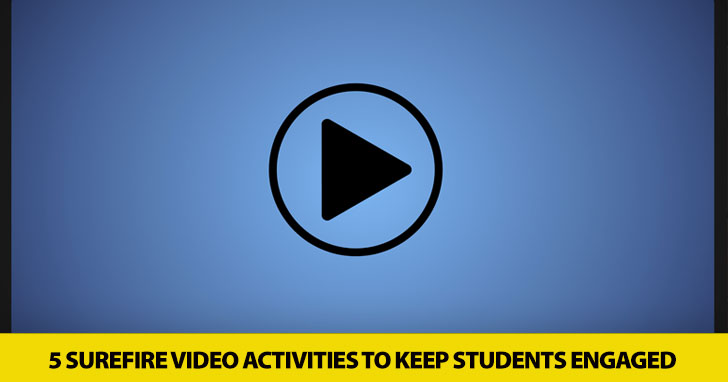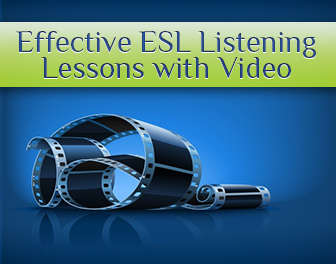They Wonít Be Able to Look Away: 5 Surefire Video Activities to Keep Students Engaged


But if the video is too hard, your ESL learners will tune out. If it’s too easy, they will sit back, relax and simply enjoy the show. If you want to show your students videos that will effectively boost their listening, you’ll need to consider a few things.

The first thing you’ll need to consider is whether you’ll show your class a video that was especially made for English teaching or authentic video, like movies, cartoons or TV shows. Each has its own set of advantages and disadvantages:
My general recommendation is to use ESL videos for beginners and authentic material for more advanced learners, but try to show beginners authentic video once in a while, even if it’s a short weather report or movie trailer.
Any teacher who has shown a video to a class knows that it’s not as simple as popping in the CD and pressing play. At least, effective video lessons shouldn’t be this way. They need a little work. There are several ways in which you can show a video to maximize listening:
This is another thing that may depend on your students’ level. As a rule of thumb, more advanced students should not have the subtitles on. But this may depend on the video (authentic or made for ESL) and each particular group. In any case, if students watch a video with subtitles, they should be in English, and you should at some point be able to turn them off.
Will you show the complete video through to the end, or pause in the middle to check for comprehension or do an activity? This again, depends on the group, but more so on the length of the video. Movies should definitely be paused at some strategic points, in fact, they may be watched over the course of several days. If you’re also teaching a grammar point or reviewing vocabulary, you might want to pause the video to review these concepts. Unless the video is very short (less than 5 minutes), I like to divide it into parts.
This may seem like an obvious step, but teachers often make the mistake of trusting the CD or video file, and not checking it before class. This is especially important if you’ll be using authentic video and not the kind prepared specifically for ESL students. Be especially careful with YouTube videos. How long is the video? Is there anything about the content that may not be appropriate for children? Is it good quality video or does it end abruptly for no apparent reason?
Leave it Murphy’s Law. Anything that could go wrong will go wrong in your video lesson. Do you have all of the necessary accessories/power cords for the computer or DVD player? Are there batteries in the remote? Is your laptop battery fully charged? You may think these are minor details, but believe me, you don’t want to loose precious minutes of your lesson or worst of all have students staring at the ceiling while you sort out your technical problems. If possible, arrive early to set everything up and make sure everything is working properly.
What type of worksheet will you give them? What will be the task? Listening for gist? Or answering comprehension questions? If you decide to use authentic video, you’ll have to create one yourself.
Never underestimate a video’s ability to help improve listening – and entertain in the process. It’s a treat that students of any level will welcome!
Share below!